Lael Wilcox: Riding out of Nome
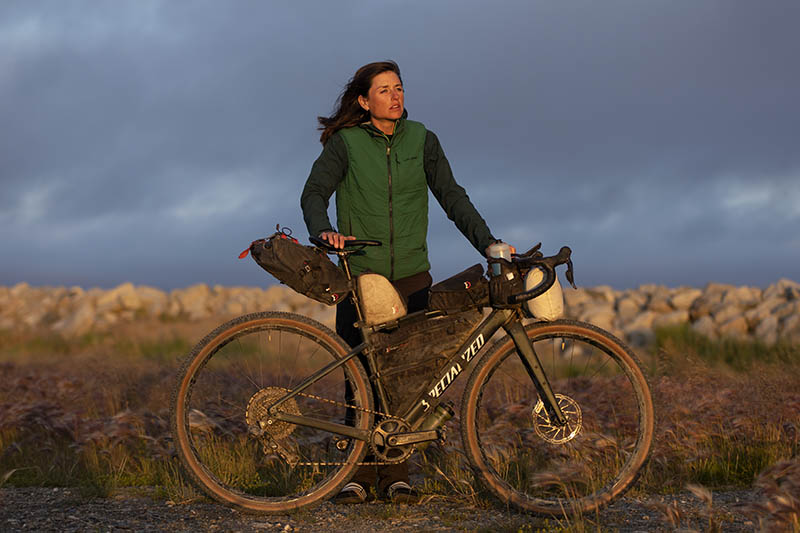
Roads in Alaska are precious. Many communities are isolated, only accessible by plane or boat. Pull out a map, and you’ll see village dots inland and coastal, with no road lines connecting them to the outer world. Visiting remote places has been very eye-opening for me: The communities are contained. They’re bonded together. You can hardly wander off as no path or road will take you away. The roads might extend out of town for two miles or maybe twelve, out to a creek or the coast or the dump or a mine, and then they dead-end. It almost feels like being on an island, but there’s land in between. Far to the north, in the tundra, overland travel is possible as there aren’t any trees, but that feels very different from riding a road to visit another community. It’s beautiful and wild, and it puts my mind in a very different place.
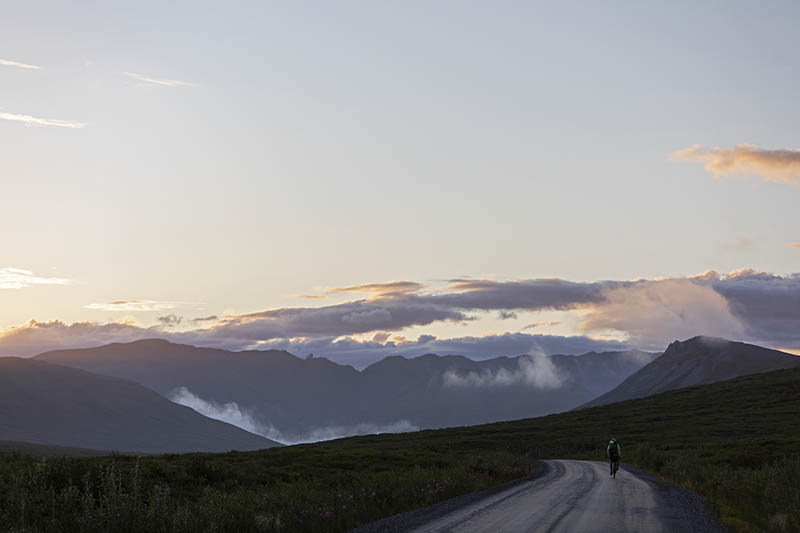
When I set out to ride all major roads in Alaska in 2017, I’d come back to Anchorage in between trips to work at The Bicycle Shop to fund my next ride. We had a map of the state covering an entire wall near the kids’ section, where we set people up for test rides. Folks would come in and ask where I was headed next. I’d trace my finger along the line from Fairbanks to Chicken, on to Eagle, and then back to the Canadian Border crossing on the Top of the World Highway. I’m going there! The map showed me the possibilities of riding in Alaska, and how these places are connected.
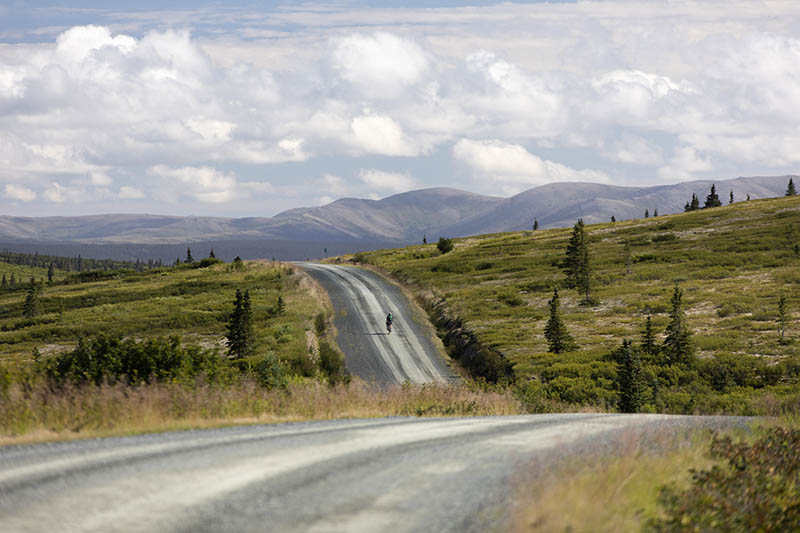
In the far northwest corner of the state, on the Seward Peninsula, my eyes kept coming back to a little network of roads. They don’t attach into the main system, but they stand alone on the far reaches. Nome is a mythical place best known for the gold rush in the late 1800s and, more recently, as the finish line of the 1,000-mile Iditarod dog sled race. The Iditarod course is only passable in winter because the ground, rivers and lakes are frozen. I talked so much about going to Nome that my mom booked me a flight for my birthday.
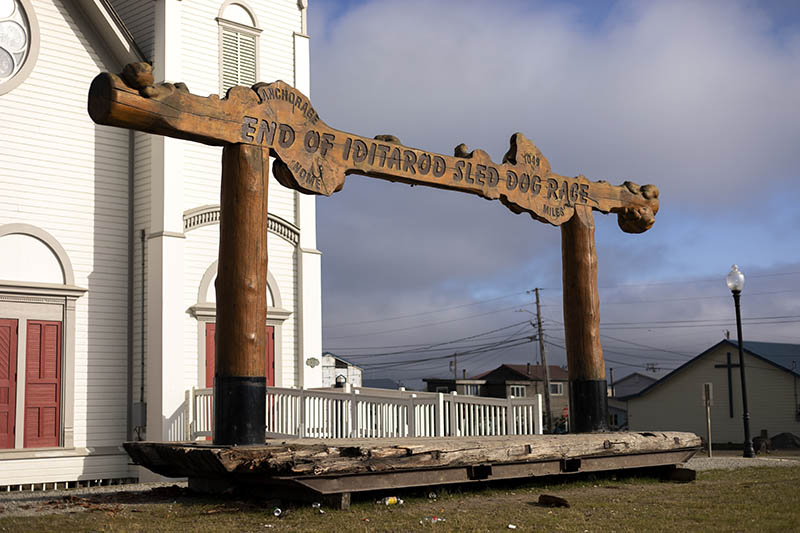
I’ll never forget that trip. Nome is a place of sandy beaches on the Bering Sea that climb into the mountains. Sightlines are extensive because there are very few trees. The surrounding area has a high population of grizzlies, muskoxen, foxes, moose, reindeer, and so many birds. Close to the coast, diverse vegetation thrives from the sea air and lush soil.
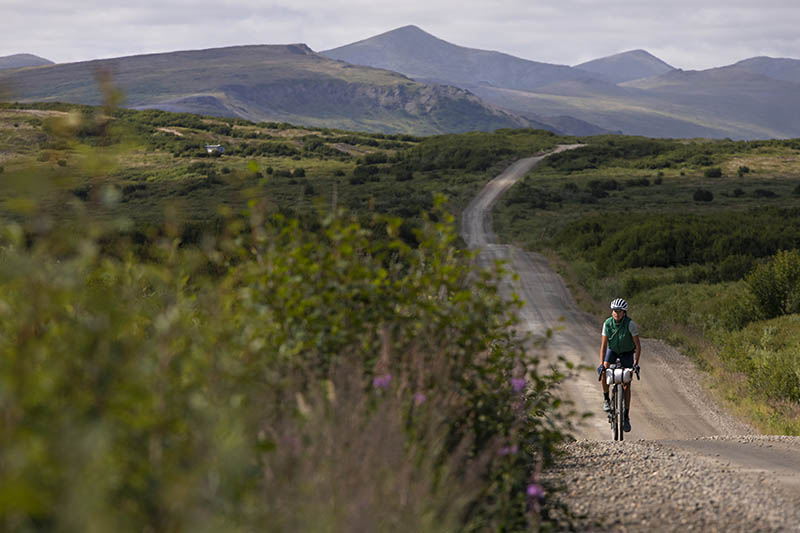
Rue and I are back in Alaska this summer to revisit my favorite roads and document these places to share with others. I am fourth-generation Alaskan, and this is where I got into endurance riding. The main idea is to encourage others to begin adventures from home and see where that leads.
I knew I wanted to go back to Nome this summer. I wasn’t sure how it would fit in. Just before my birthday, we found a perfect weather window. Everywhere else in the state had a forecast for rain, except Nome, where three straight days of sun were predicted. We were in Fairbanks, wrapping up our 500-mile ride from Deadhorse on the remote North Slope. Our initial plan was to ride another 400 miles back to Anchorage via the Richardson and Glenn Highways – but the rain made this less appealing. We detoured to Nome instead. It felt like a lucky break, and it was the best birthday I’ve ever had.
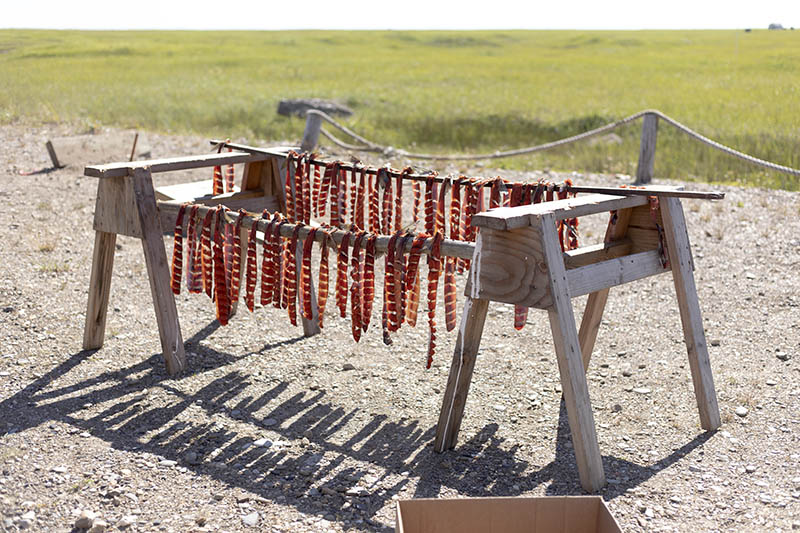
There are three major roads out of Nome, each between 70 and 85 miles. We land in Nome in the afternoon to sunny skies and a ripping western wind. We put our bikes together and start riding east to Council, an old gold rush community that you have to cross a river to access. The road parallels the Bering Sea coast for the first thirty miles, before turning inland past an abandoned rusty railroad and the Safety Roadhouse, the last checkpoint on the Iditarod. We stop to look at red salmon drying in strips off wooden planks.
A couple of locals with a couple little kids in a truck pull over to talk. They insist on giving us a can of bear spray, claiming they’d never go out without a gun. The woman is from Nome. Her grandmother was born in Council. The woman used to dream of riding her bike out there. I tell her I rode to Council three years ago, but stopped at the river and turned around. I didn’t want to bother anyone.
“This time you have to cross!”
I promise I will.
She shows us how to forage for wild peas and cilantro and advises us how to make tea to calm the stomach or poultices of herbs for wounds. She’s teaching her sons what she knows because she doesn’t want these things to be forgotten. We keep our distance to try and keep everyone safe. Now, more than ever, I feel the importance of community and sharing ideas. Folks are desperate to connect, and we’re doing our best to do this in a responsible way.
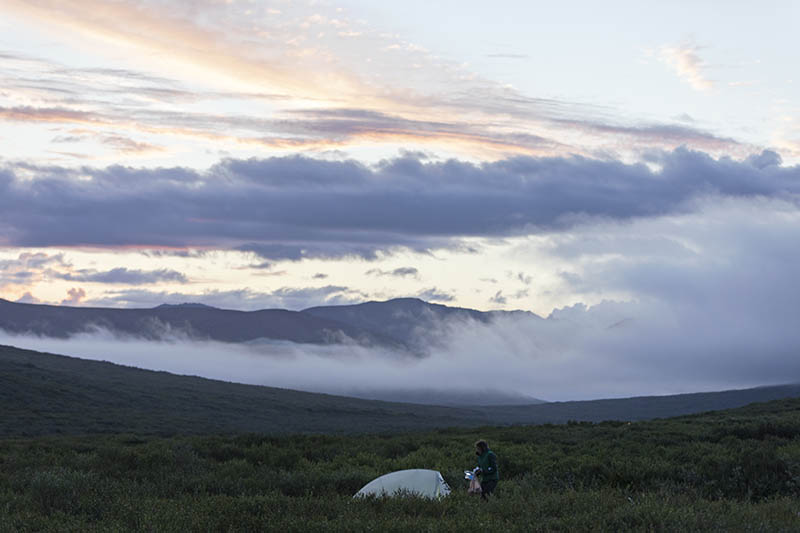
Into the night, we start climbing. The road is of exceptional smooth quality, and there is no traffic past the roundhouse. We set up the tent on an embankment, talk about making some dinner, but fall asleep without even realizing it. It never really gets dark, but a month after the summer solstice and so many late nights, my body is craving rest.
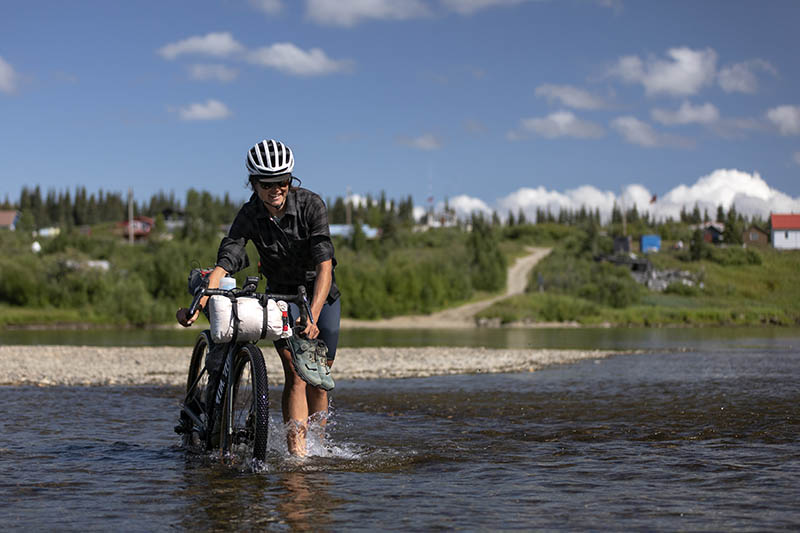
In the morning, we boil water for coffee and pack up. We pedal the final twenty-two miles to the river that flows between the road and Council. I take off my shoes and start wading across. I’m stepping through pink salmon swimming upstream. In the middle of the stream, the water raises to my upper thighs. The current picks up and eases as I wade across. I set my bike down on the other side, step into my shoes, and pedal up the hillside.
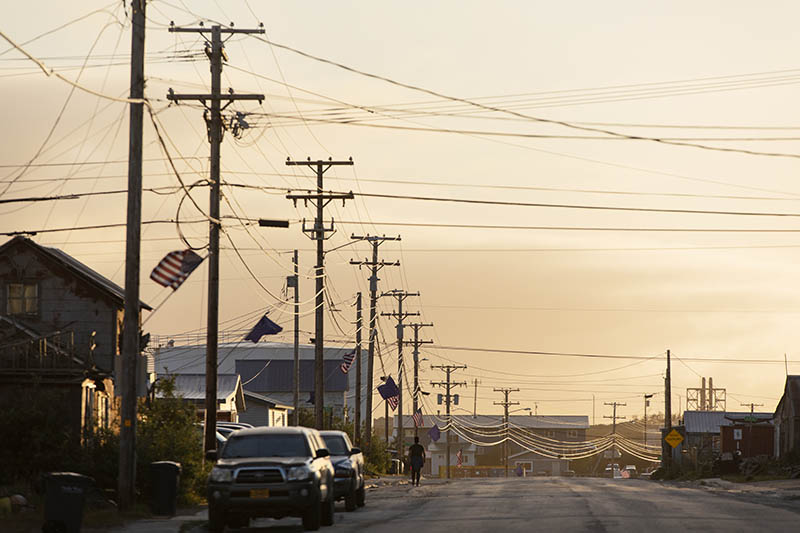
There are wooden houses with flags. I’m surprised to see power lines. A little kid on 20” wheels pedals towards me. I hit the end of the road and turn back the other way. Folks resting in the sun wave from their porches. There’s a woman on a bike towing a baby trailer. It’s a great summer moment. I return to the river and cross back over to meet Rue on the other side. We pedal three miles to a fresh spring to fill up our water bottles.
While we’re having a snack, a white pick up pulls up. I stick out my thumb for a hitch. We have two more days in Nome, and we want to ride all the roads. Our goal is to get back to town, replenish our supplies, and ride back out in a different direction. The folks in the truck are renovating a friend’s camp in Council. They give us a couple of pillows to sit on with our bikes. From the bed of the truck, we spot a long, lean animal with a bushy tail running up the hillside. It looks too large to be a fox, and we’re still not sure what it was. The ride home is windy and cold. By the time we get back, I’m chilled to the bone.
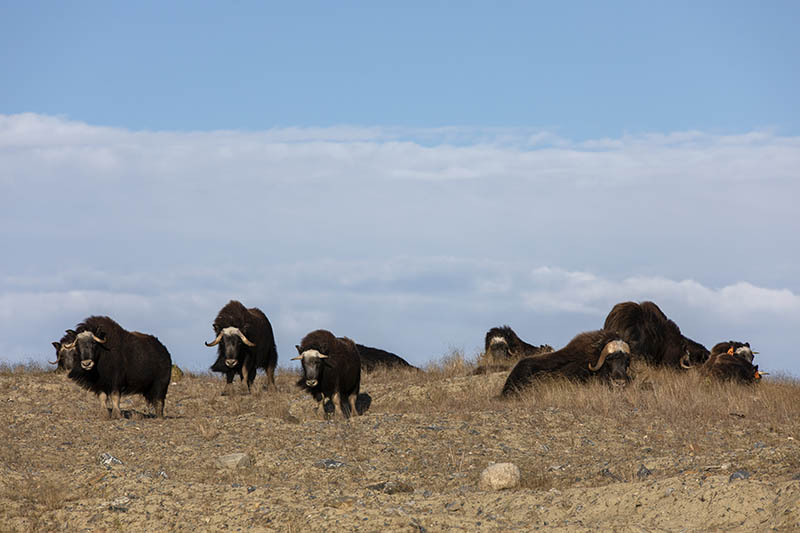
We take a hot shower, eat a hot meal, repack our gear, and then we’re back out on the bikes, this time in the direction of Kougarok. It’s an 85-mile road that used to lead to the old Taylor mine. There is still plenty of active gold mining on this road, and a lot of people come out for fishing, too. Just out of town at a construction site is a herd of musk-oxen, their long, straight hair blowing in the breeze.
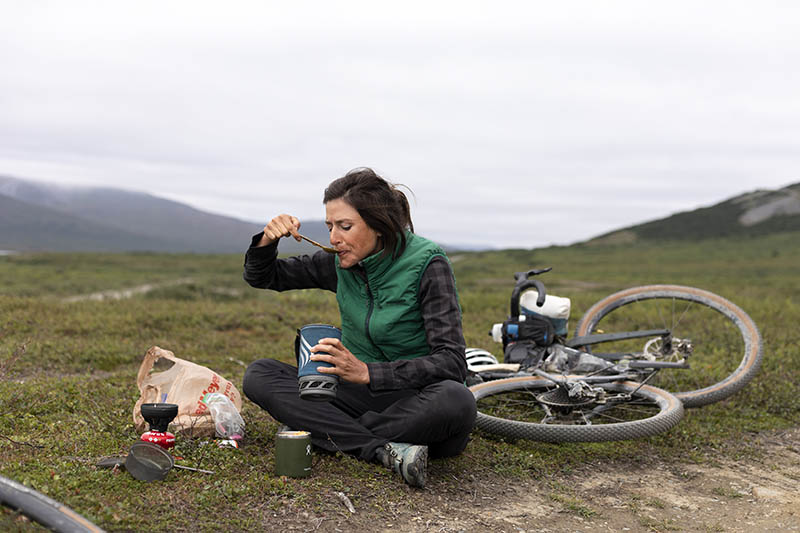
Following the Nome River, we set up the tent on the tundra, among the low bushy blueberries. We boil water for hot chocolate and hold each other close. Tomorrow we’ll ride to the end of the road, turn around, and try to get back to Nome. And then there’s one more road to the Inupiat village of Teller, along the Kigluaik Mountains, and back out to the Bering Sea. And then we have to get back and pack up and fly out. The day after tomorrow, we’re heading to the rainforest of southeast Alaska to ride the road system on Prince of Wales Island.
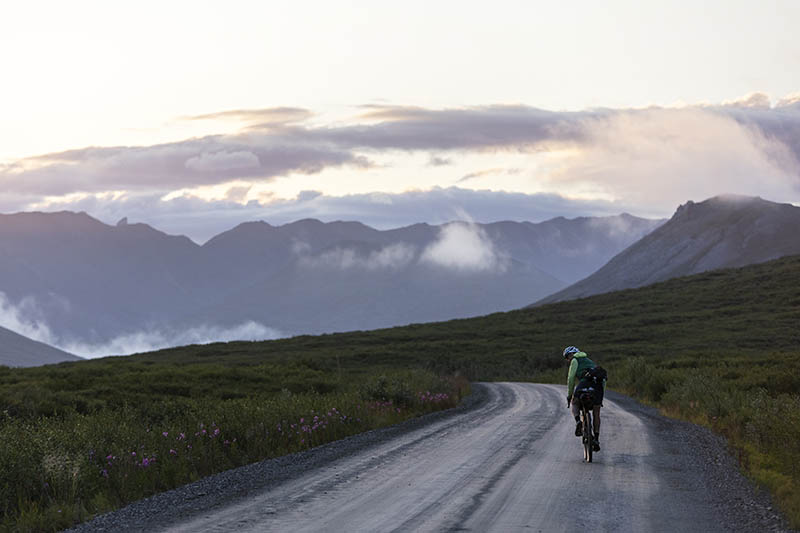
There’s an urgency to these rides, but there are also so many beautiful moments in between. We have a mission driving us, but we have no idea how it’ll actually unfold, and that’s a big part of the fun.
Photos by Rugile Kaladyte.


